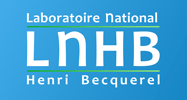Brachytherapy platform
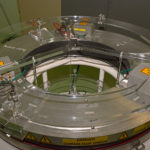
Calibration of brachytherapy sources
The LNHB is interested in establishing dosimetric references for different types of brachytherapy sources (used in different dose rate ranges as shown in the table below):
- 192Ir, currently the most widely used source;
- 60Co, an alternative to 192Ir for high dose rate treatments (lower cost for similar therapeutic outcomes);
- 125I, a growing source of use for the treatment of prostate cancer.
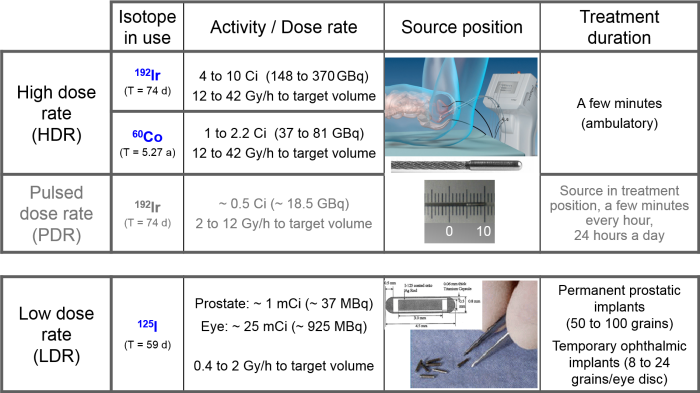
Sources of 192Ir and 60Co
High dose rate brachytherapy sources are too active to be manipulated manually. They are therefore automatically guided to the different treatment points by means of a projector (as shown in the picture above). Since 2001, the LNHB had been using a 192Ir source projector. A new projector was installed at the beginning of 2017, allowing alternatively to project 192Ir and 60Co sources. A reference air kerma flow rate reference will again be established for 192Ir sources. This will be followed by the implementation of a new reference air kerma flow reference for 60Co sources.
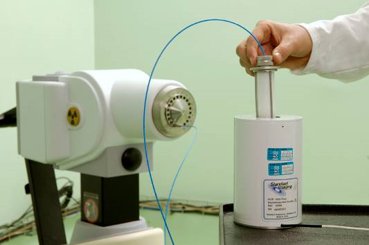
In practice, these references are established using a cavity ionization chamber previously calibrated under different reference beams:
- For 192Ir, the calibration coefficient of the cavity chamber is calculated by linear interpolation of the calibration coefficients of RX 250 kV and 137Cs beams that frame the mean kerma energy in air of the photon spectrum emitted by the 192Ir source.
- For 60Co, the calibration coefficient will be deduced from that obtained using the 60Co beam.
The transfer to the users of these references, under Cofrac accreditation, will be carried out via the calibration of medical dosimeters (ionisation chamber with wells + electrometer) using sources of 192Ir (from 2017) and 60Co (from 2019) previously calibrated.
Sources of 125I
An innovative instrument has been designed at the LNHB since 2005 to establish primary references for air kerma flow and water absorbed dose for low dose rate 125I sources. It is a toroidal shaped air chamber with an air wall. Because of the geometry of iodine grains and their imperfect reproducibility, the grains present anisotropy of emission in both transverse and longitudinal planes. The use of a toroidal shaped chamber not only means that the contribution of all the radiation emitted in the transverse plane of a grain (placed in the centre of the chamber) can be averaged over 2π sr, but also the detection volume can be enlarged to increase the ionization current delivered by the chamber. These references are being validated.
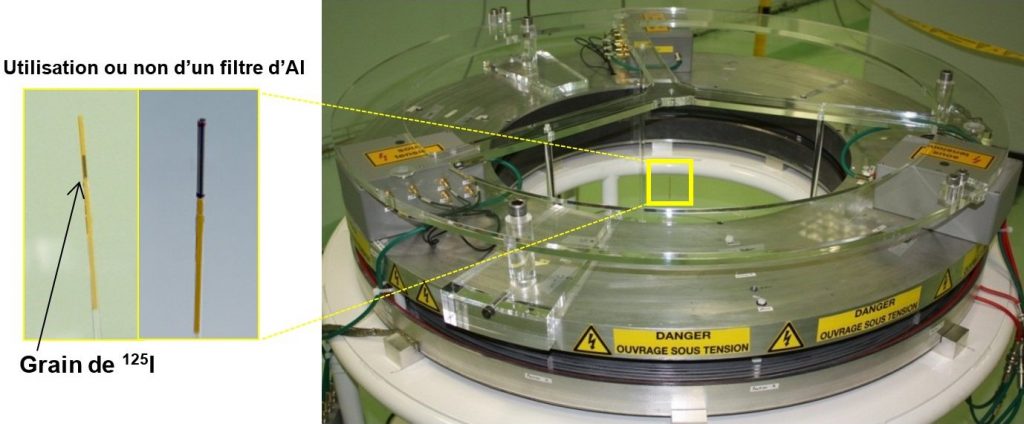
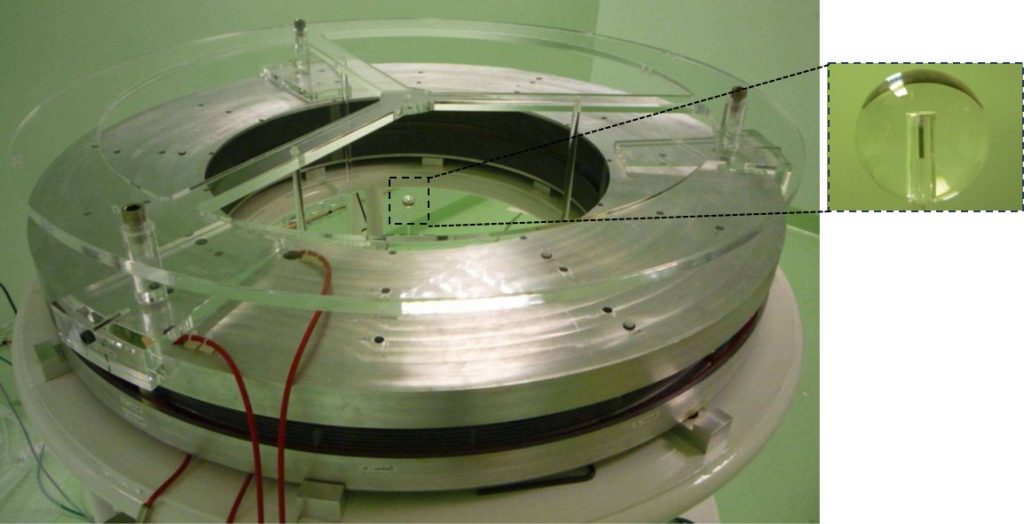
Our job: metrology
dosimetry
Implemented methods for the establishment of national references must be adapted to the radiation type and its intensity. They are based on measurement technics such as calorimetry, ionometry and chemical dosimetry.
Radioactivity
The variety of the emitted radiation and physical forms of the sources oblige to adapt the measurement process in order to establish national references: methods with defined geometries, or 4 π countings geometries, coincidence countings, etc.
